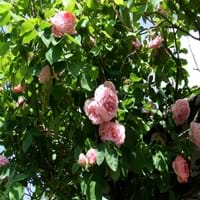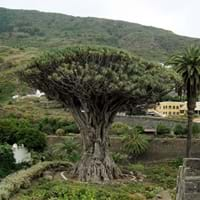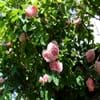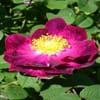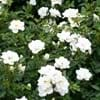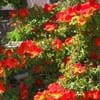Life Span
Perennial
Perennial
Type
Flowering Plants, Houseplant, Shrub
Broadleaf Evergreen
Origin
Asia, Europe, North America
Canary Islands
Types
R. chinensis var. chinensis, R. chinensis var. spontanea,R. chinensis var. semperflorens
Not Available
Number of Varieties
Not Available
Habitat
gardens
Volcanic Islands
USDA Hardiness Zone
3-10
11-12
AHS Heat Zone
Not Available
12-1
Sunset Zone
Not Available
16, 17, 21, 22, 23, 24
Habit
Upright/Erect
Upright/Erect
Flower Color
Hot Pink, Light Pink, Orange, Red, White, Yellow
White
Flower Color Modifier
Not Available
Not Available
Fruit Color
Not Available
Not Available
Leaf Color in Spring
Dark Green
Dark Green
Leaf Color in Summer
Dark Green
Dark Green
Leaf Color in Fall
Dark Green
Dark Green
Leaf Color in Winter
Dark Green
Dark Green
Leaf Shape
Pinnate
Long linear and narrow
Plant Season
Spring, Summer, Fall, Winter
Spring, Summer, Fall, Winter
Sunlight
Full Sun
Full Sun, Partial Sun
Growth Rate
Slow
Very Slow
Type of Soil
Loam, Sand
Loam, Sand
The pH of Soil
Neutral, Alkaline
Neutral, Alkaline
Soil Drainage
Well drained
Well drained
Bloom Time
Not Available
Summer
Tolerances
Not Available
Drought, Frost, Salt
Where to Plant?
Ground, Pot
Container, Ground, Pot
How to Plant?
Seedlings, Stem Planting
Seedlings, Stem Planting
Plant Maintenance
Medium
Low
Watering Requirements
Requires a lot of watering, Requires regular watering
Average Water Needs, Do Not over Water, Keep ground moist, Needs less watering, Never Over-water, Requires watering in the growing season
In Summer
Lots of watering
Less Watering
In Spring
Moderate
Less Watering
In Winter
Average Water
Less Watering
Soil pH
Neutral, Alkaline
Neutral, Alkaline
Soil Type
Loam, Sand
Loam, Sand
Soil Drainage Capacity
Well drained
Well drained
Sun Exposure
Full Sun
Full Sun, Partial Sun
Pruning
Remove damaged leaves, Remove dead branches, Remove dead leaves
Prune if you want to improve plant shape, Remove damaged leaves, Remove dead branches, Remove dead leaves, Remove hanging branches
Fertilizers
All-Purpose Liquid Fertilizer
Water soluble fertilizers
Pests and Diseases
Red blotch
Red blotch
Plant Tolerance
Drought
Drought
Flowers
Insignificant
Showy
Flower Petal Number
Not Available
Single
Foliage Texture
Not Available
Medium
Foliage Sheen
Not Available
Glossy
Attracts
Not Available
Birds
Allergy
Asthma, contact allergic dermatitis, Rhinoconjunctivitis
Toxic
Aesthetic Uses
Borders, Bouquets, Showy Purposes
Beautification, Landscape Designing
Beauty Benefits
good for lips, Improve skin tone, Moisturizing, Speed hair growth
Not Available
Environmental Uses
Air purification
Air purification, Food for insects, Nesting sites for birds
Medicinal Uses
anti-inflammatory, Antiseptic, Asthma, Dehydration, Dermatitis, Eczema, Eye Problems, Fatigue, Gallbladder Diseases, Liver problems, Sore throat, Stomach aliments, Swelling, Ulcers, Urinary tract problems
Nutrients
Part of Plant Used
Flowers
Flowers, Leaves, Stem
Other Uses
Can be made into a herbal tea, Cosmetics, Culinary use, Edible syrup, Making Sweet Scented Oil, Oil is used for aromatherapy, Used as essential oil, Used as Ornamental plant, Used for fragrance, Used for its medicinal properties
Can be made into a herbal tea, Decoration Purposes, Showy Purposes, Used As Food, Used as Ornamental plant, Used for its medicinal properties
Used As Indoor Plant
Yes
Yes
Used As Outdoor Plant
Yes
Yes
Garden Design
Bedding Plant, Mixed Border
Container, Feature Plant, Mixed Border, Tropical
Botanical Name
Rosa chinensis
DRACAENA draco
Common Name
China Rose, Chinese rose
Drag, Canary island dragon tree
In Hindi
चीनी गुलाब
ड्रैगन ट्री
In German
Rosa chinensis
Drachenbaum
In French
Rosier de Chine
dragonnier
In Spanish
Rosa chinensis
Drago
In Greek
Rosa chinensis
Δράκος Tree
In Portuguese
chinese Rose
Dragoeiro
In Polish
Chińska róża
smok Drzewo
In Latin
Chinese rosa
draco ligno
Phylum
Magnoliophyta
Tracheophyta
Class
Magnoliopsida
Liliopsida
Family
Rosaceae
Agavaceae
Clade
Angiosperms, Eudicots, Rosids
Angiosperms, Monocots
Tribe
Not Available
Not Available
Subfamily
Rosoideae
Nolinoideae
Number of Species
Not Available
Importance of China Rose and Dragon Tree
Want to have the most appropriate plant for your garden? You might want to know the importance of China Rose and Dragon Tree. Basically, these two plants vary in many aspects. Compare China Rose and Dragon Tree as they differ in many characteristics such as their life, care, benefits, facts, etc. Every gardener must at least have the slightest clue about the plants he wants to plant in his garden. Compare their benefits, which differ in many ways like facts and uses. The medicinal use of China Rose is anti-inflammatory, Antiseptic, Asthma, Dehydration, Dermatitis, Eczema, Eye Problems, Fatigue, Gallbladder Diseases, Liver problems, Sore throat, Stomach aliments, Swelling, Ulcers and Urinary tract problems whereas of Dragon Tree is Nutrients. China Rose has beauty benefits as follows: good for lips, Improve skin tone, Moisturizing and Speed hair growth while Dragon Tree has beauty benefits as follows: good for lips, Improve skin tone, Moisturizing and Speed hair growth.
Compare Facts of China Rose vs Dragon Tree
How to choose the best garden plant for your garden depending upon its facts? Here garden plant comparison will help you to solve this query. Compare the facts of China Rose vs Dragon Tree and know which one to choose. As garden plants have benefits and other uses, allergy is also a major drawback of plants for some people. Allergic reactions of China Rose are Asthma, contact allergic dermatitis and Rhinoconjunctivitis whereas of Dragon Tree have Toxic respectively. Having a fruit bearing plant in your garden can be a plus point of your garden. China Rose has showy fruits and Dragon Tree has showy fruits. Also China Rose is not flowering and Dragon Tree is not flowering . You can compare China Rose and Dragon Tree facts and facts of other plants too.
